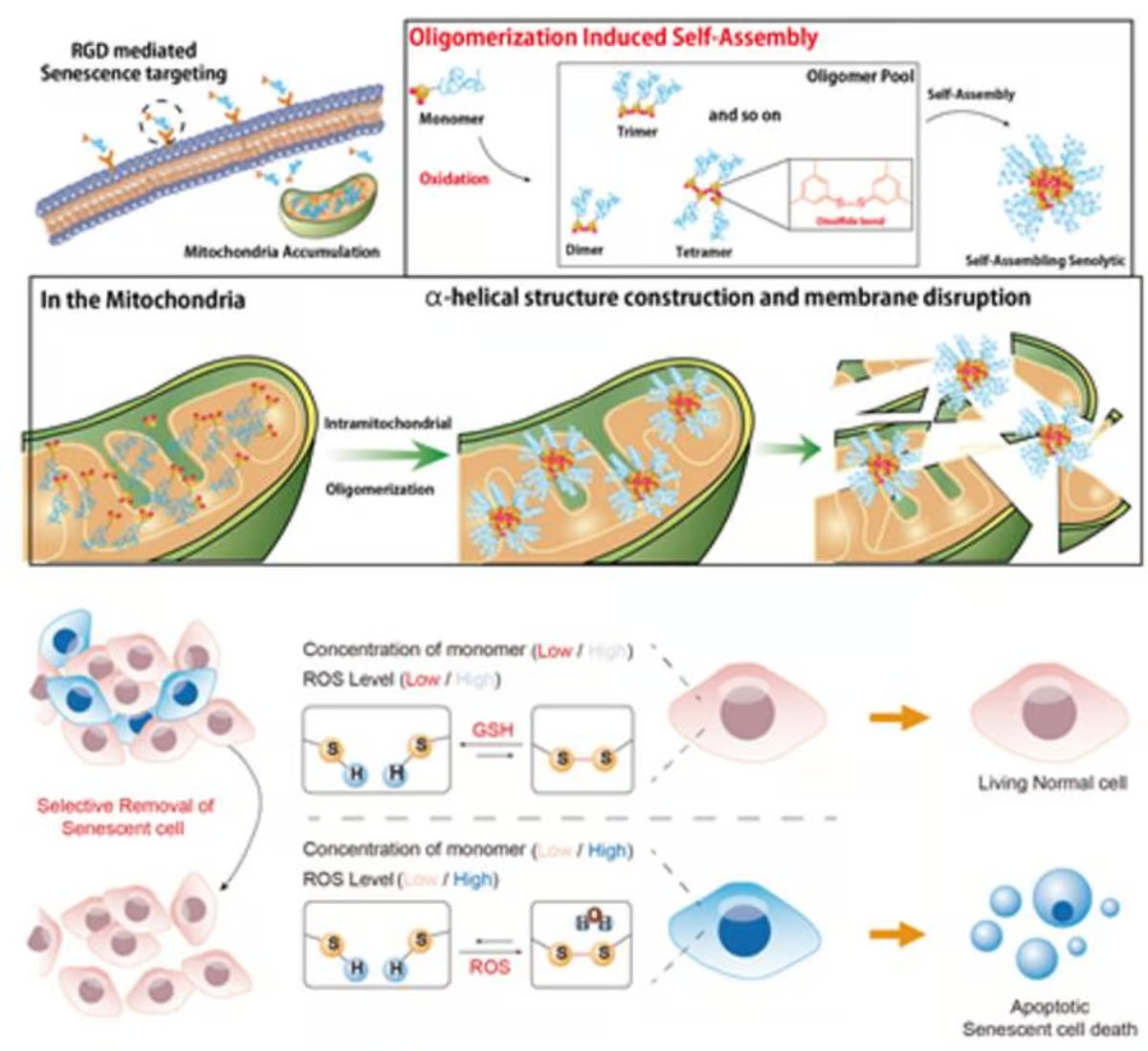Scientists are on the cusp of tapping into the best hope we have yet of a fountain of youth. Depositphotos
–
Recently, there have been promising developments in senolytics, an exciting and promising new class of therapy that targets these ‘zombie cells’ to selectively remove them, in the process removing the health issues they cause. Most target the senescent cells’ antiapoptotic proteins, which block apoptosis – programmed cell death – essentially rendering the old cells as microscopic, toxic space junk in the vast universe of our body. These senolytics, though, can face apoptosis resistance and affect healthy cells.
Now, scientists from the Ulsan National Institute of Science and Technology (UNIST) in South Korea believe they have the answer for a more effective, targeted senolytic therapy. The team designed organic molecules that could selectively target receptors over-expressed in senescent cell membranes. Working with the higher reactive oxygen species (ROS) levels in the old cells, the molecules promoted the formation of disulfide bonds and oligomers that bind together.
In its simplest terms, this oligomer self-assembly forms a protein-like alpha-helix structure that happily bonds to mitochondrial membranes in senescent cells, disrupting the cell and inducing its self-destruction. Only senescent cells are vulnerable to this stealth attack because, unlike healthy cells, they have weak mitochondrial membrane integrity.

This peptide senolytic was tested on age-related macular degeneration in a mouse model. The results were promising, with significant reductions in key senescent cell markers once the senescent retinal pigment epithelium was targeted and eliminated by the senolytic. The scientists noted marked improvements in visual function in the aged mice.
“The selective removal of aging cells by targeting the mitochondria and inducing dysfunction has been successfully demonstrated in our experiments,” said research lead Ja Hyoung Ryu, from the Department of Chemistry at UNIST. “This approach represents a new paradigm for treating age-related diseases.”
While an emerging science, the potential for treatment is immense. Just some senescent cells and their serious health consequences include cardiomyocytes (cardiac aging and heart failure), astrocytes and microglia (cognitive decline), beta cells (type 1 and type 2 diabetes), chondrocytes (osteoarthritis), fibroblasts (decreased health and life span), melanocytes (human skin aging), osteocytes (osteoporosis) and T cells (physical frailty, insulin resistance).
The research was published in The Journal of the American Chemical Society.
Source: Ulsan National Institute of Science and Technology
–

























